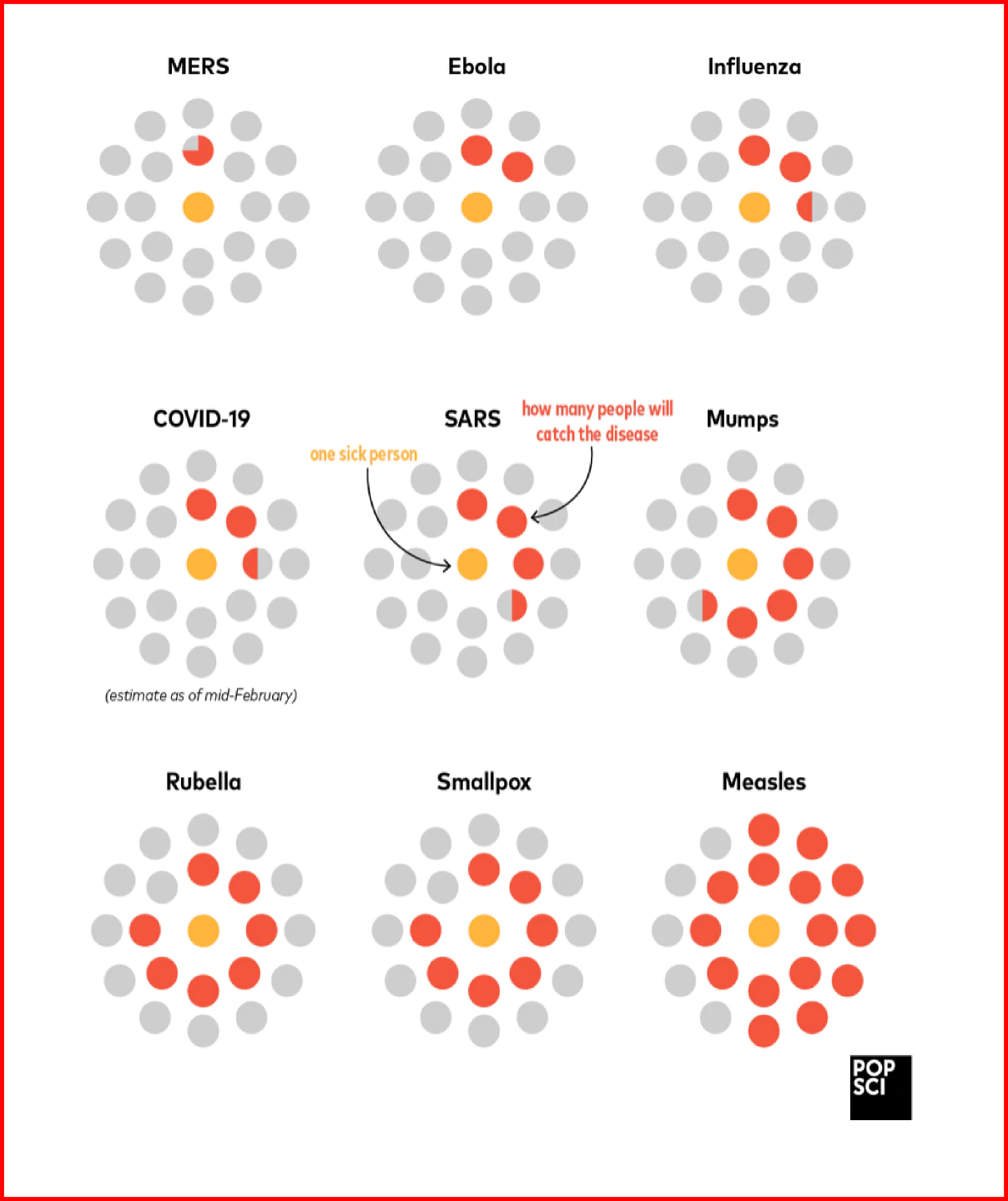JUST HOW CONTAGIOUS IS CORONAVIRUS COMPARED TO OTHER DISEASES – HERE’S A CHART

Scientists, medical professionals, and governments around the world are working to understand how the new respiratory disease ravaging Hubei province spreads—and how bad it could be for the rest of the world. Part of this effort is epidemiology: the study of how infections move through populations and how to control them.
Epidemiology incorporates everything from geography to complex mathematics in its effort to understand the spread of disease. Here are some basic epidemiological concepts that can help you get past the panic, misinformation, and xenophobia that tend to drive conversations around a newly emerging illness.
One quantity scientists use to measure how a disease spreads through a population is the “basic reproduction number,” otherwise known as R0 (pronounced “R naught,” or, if you hate pirates, “arr not”). This number tells us how many people, on average, each infected person will in turn infect. While it doesn’t tell us how deadly an epidemic is, R0 is a measure of how infectious a new disease is, and helps guide epidemic control strategies implemented by governments and health organizations.
If R0 is less than 1, the disease will typically die out: Each infected person has a low chance of passing the infection along to even one additional individual. An R0 larger than 1 means each sick person infects at least one other person on average, who then could infect others, until the disease spreads through the population. For instance, a typical seasonal flu strain has an R0 of around 1.2, which means for every five infected people, the disease will spread to six new people on average, who pass it along to others.



